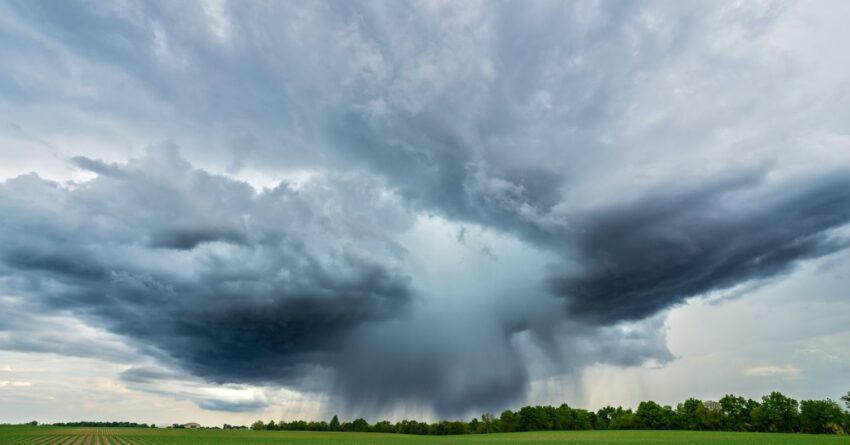
Challenge of Climate Change
Source: Dean Moriarty:Pikabay royalty free
Educators, mental health experts, parents, and environmental advocates offer hopeful strategies for helping our children and youth navigate their complex emotional responses to the climate crisis. Disseminating accurate scientific information about climate change and involving them in participatory initiatives to address its effects can foster understanding and optimism. Equally crucial is the awareness among adults in their lives that children and youth may grapple with a range of emotions necessitating sensitive handling and, in certain instances, professional mental health support.
The Challenge of Climate Crises
Over the past year, the global community has endured severe weather events such as wildfires, floods, droughts, hurricanes, and extreme heatwaves. These events have resulted in physical harm, loss of life, and psychological trauma. The U.S. Environmental Protection Agency has noted that “children may experience mental health repercussions from major storms, wildfires, and other extreme events, which are expected to increase due to climate change.”1
Both adults and children are distressed by the conflicting perspectives on climate change: those of climate scientists sounding alarms about environmental harm and those who deny scientific evidence. Some children believe that adults need to take their climate concerns more seriously. A majority of young people express “extreme worry” about climate change and may perceive a bleak future or the impending doom of humanity. Terms like “Eco-anxiety” and “Climate Anxiety” have emerged to describe this distress.2
Hickman (2021) surveyed 10,000 individuals aged 16 to 25 from Australia, Brazil, Finland, France, India, Nigeria, the Philippines, Portugal, the United Kingdom, and the United States. The findings revealed that 59 percent of respondents were very or extremely concerned about climate change, with 84 percent reporting moderate worry. Alarmingly, more than half reported feelings of sadness, anxiety, anger, powerlessness, helplessness, and guilt; 75 percent expressed fear of the future, while 83 percent believed that humanity has failed to care for the planet.3
Empowering Children and Youth to Take Action
Numerous approaches exist to empower children and youth, helping them combat feelings of powerlessness, from simple projects like tree planting to educational nature walks to learn about local ecology. The Climate Action Project, a student-centered, 6-week program, has created a global network across 149 countries. It brings together like-minded teachers working on the same topic to empower young individuals with the latest scientific insights and solutions to the climate crisis. Students engage in climate change discussions, and the website offers a wealth of resources in 15 languages. EarthDay.org‘s mission is to diversify, educate, and mobilize the global environmental movement. Stemming from the inaugural Earth Day in 1970, the organization is now the world’s largest recruiter for environmental action, collaborating with over 150,000 partners in 192 countries to promote positive change for the planet. Children and youth can participate in a billion acts of green to support the environment.
Listening and Encouraging Action
The following can help in engaging with with children and youth to create meaningful educational opportunities, emotional support, dialogues, and activities:
- Engage in conversations with your children and adolescents about their thoughts and emotions regarding the climate crisis.
- Take their concerns seriously and validate their feelings. Some youth may be grappling with existential crises due to climate events, and it’s important not to minimize their emotions.
- Encourage their participation in community projects to combat feelings of helplessness.
- Explore organizations such as the Resilient Activist, which recognizes that many youth are compassionate climate activists struggling with depression, grief, and a sense of impending failure. They offer self-care resources to support long-term resilience amid their challenging advocacy.
- Prepare a Family Emergency Plan and Survival Kit to help children and youth feel more secure in their homes and communities. The federal Ready campaign promotes preparedness for emergencies and disasters through public engagement. It emphasizes four key elements: staying informed about potential community emergencies, creating a family emergency plan, assembling an emergency supply kit, and familiarizing yourself with your community’s disaster plan.
- Some children and youth may require additional support for their psychological responses to the climate crisis. To find a therapist, visit the Psychology Today Therapy Directory.
Working together, we can support children and youth as they grapple with their emotional responses to the climate crisis. Their thoughts and feelings deserve recognition with compassion and empathy. Moreover, they can learn how to formulate solutions to address climate challenges and contribute to the planet’s healing.
